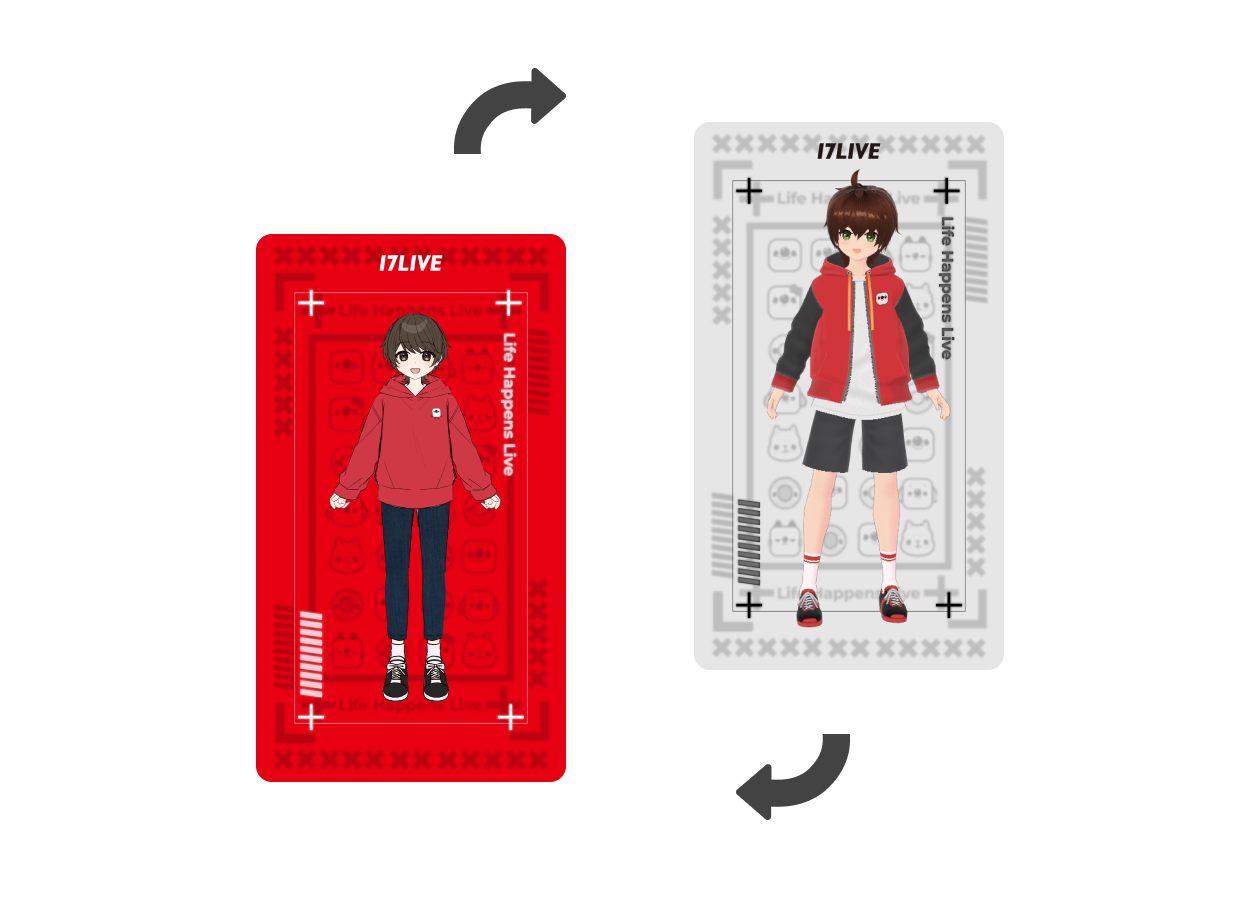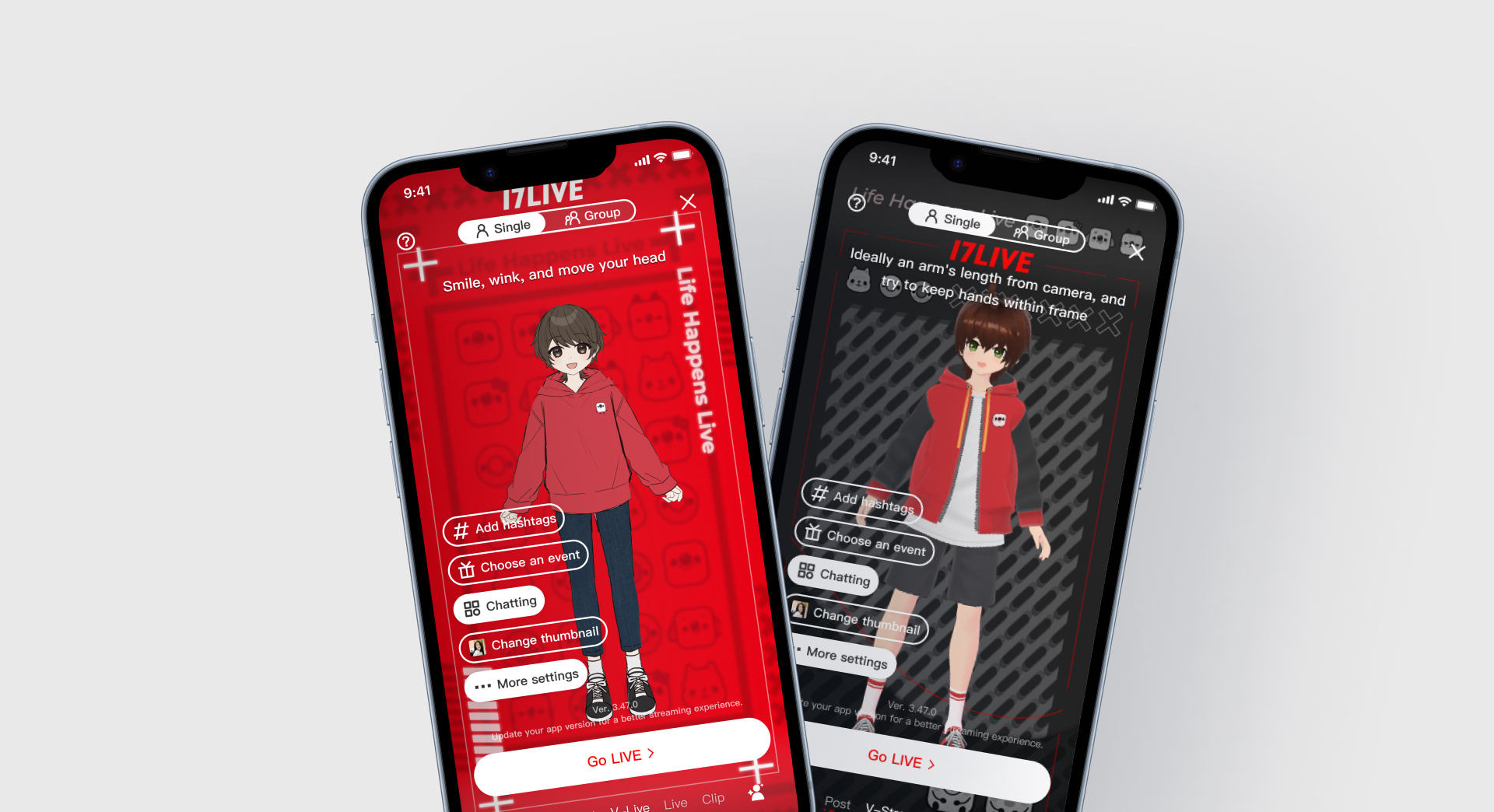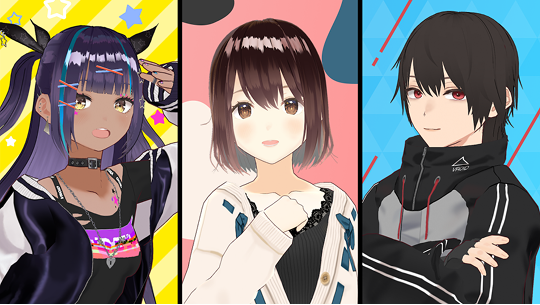In the H1 of 2023, 17LIVE’s business focus centered on virtual streamer-related services. To lower the entry barrier for virtual streamers and recruit more of them to join the platform, we aimed to introduce Live2D and VRM technologies. This would help increase both the overall volume of virtual streams and the number of new streamers.

Implemented Live2D and VRM technologies to lower the barrier for new streamer, increase usage rate and number of active virtual streamers.
Designed the interface across web and mobile platforms to creating a seamless v-liver’s streaming experience.
Ensuring design scalability for future avatar updates and animation complexity, technical feasibility.
led a 5% increase in v-live streaming, 6% rise in feature usage, and 36% 7D return rate for new streamers.

Virtual streaming is a rising trend in Japan's live streaming market. In response to our business strategy, we needed to acquire and sign contracts with more existing V-Livers. These streamers are already accustomed to other platforms and typically have their own Live2D character files. Considering the tight promotional timeline, our first phase focused on adopting the familiar and accessible Live2D tool — a technology that transforms 2D illustrations into animated characters — enabling these streamers to start streaming on 17LIVE quickly.

Many were unaware that 17LIVE offers virtual streaming and lacked confidence to compete with established streamers on rival platforms.
17LIVE is seen primarily as a money-making platform rather than a space for social interaction.
Other platforms provide easier avatar creation and more compatible streaming environments.
Users struggle with creating their Live2D avatars.
It’s challenging to convey emotions effectively with Live2D tools.
Virtual streamers usually prefer to use the devices they are most familiar with.
To address these findings and reach more potential users, we initiated the second phase of tool integration by introducing VRM, a universal 3D avatar file format. Through VRoid Hub, a character community platform, users can upload their own avatars or use publicly available characters to try virtual streaming.
Additionally, by leveraging Unity’s 3D technology, we incorporated facial and hand tracking features. This significantly lowers technical barriers, enhances avatar interactivity, and showcases the charm of virtual streaming.

Although the platform doesn’t yet support virtual streaming directly from a computer, we’ve introduced a cross-platform material upload system for existing V-Livers. Streamers can easily upload character files via web or mobile, simplifying the process and reducing preparation time.
To help new users get started, we designed step-by-step tooltips and pop-up tutorials for Live2D and VRM tools. This lowers the learning curve, making it easier for first-time virtual streamers to understand and use the features.
We also offer various avatar customization options in the app, including position, angle, size, background, and expressions. Streamers can save frequently used actions to a quick-access list for real-time interaction, making virtual streaming more engaging and expressive.
Live2D launched in March 2023.
It successfully helped 17LIVE enter the Japanese virtual streaming market. In just three months, the total amount of virtual streaming on the platform grew by 5%, and the usage rate increased by 6%. This shows that the new feature made more users interested and willing to try virtual streaming. Among new streamers, 36% came back to do virtual streaming again on the seventh day after their first try, which means the guidance system and easy-to-use process helped keep them engaged. Overall, this update made virtual streaming on 17LIVE more accessible, more fun, and encouraged users to stay active on the platform.